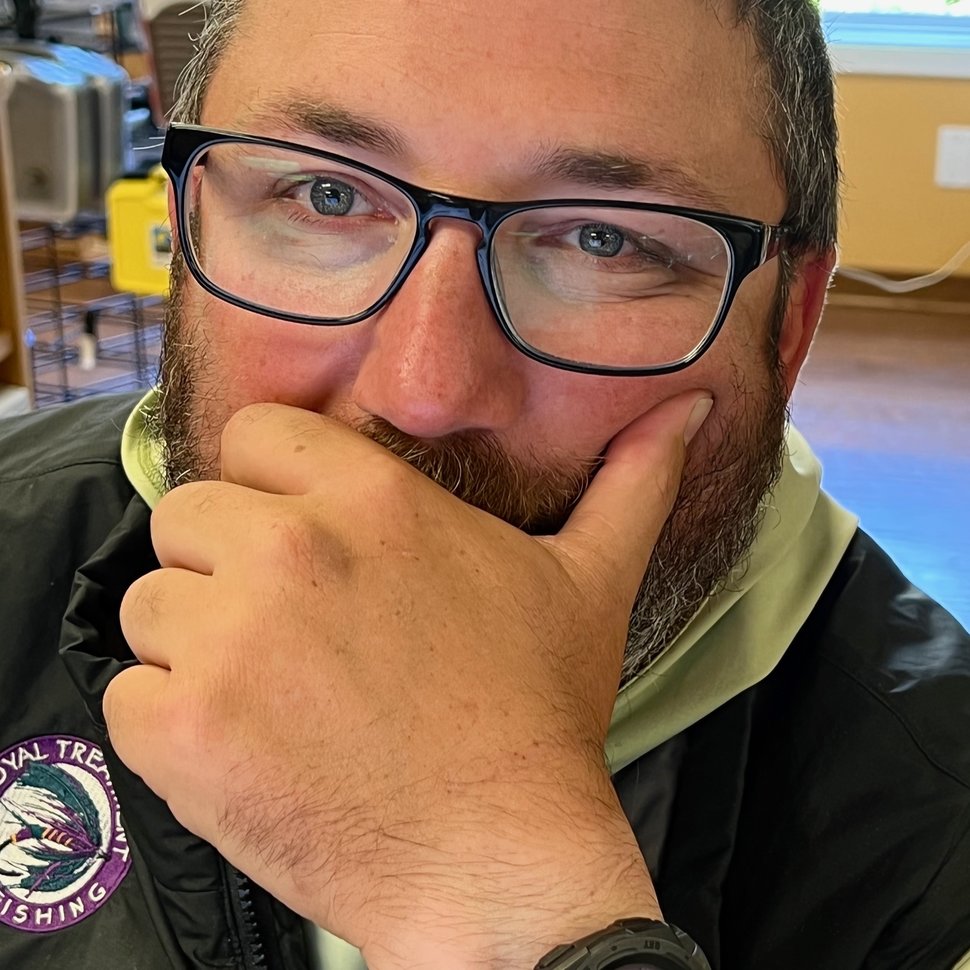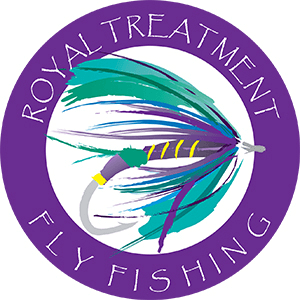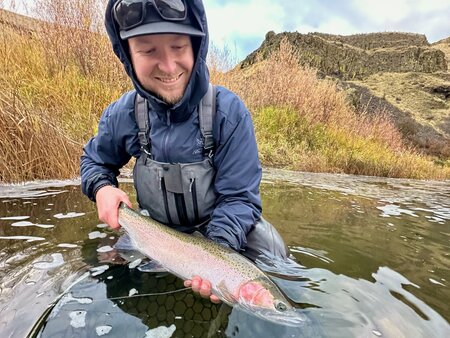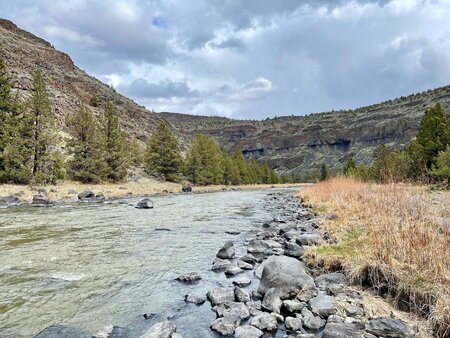Ask the Oracle ~ Up or Down?

Mr. Oracle
When tying intruder-style flies with weighted eyes, I always want the trailing hook with point up to reduce snagging. I then mount the weighted eyes under the shank with the bend of the attachment to the tippet pointed up. It would seem with the attachment point up the fly would travel through the water maintaining the hook point up. In your recent newsletter, you offered Rob Crandal's "Provider", which showed the weighted eyes under the shank and the bent attachment point pointed DOWN. This seems contrary to what I would expect. What would you recommend - bend of attachment point up or down?
James K
James,
When I saw Rob’s collection of flies, I thought the same thing. Rob ties his flies, the Provider, Guides Choice, Devil's Candy, and a host of others with the eye turned down and the barbells on that side. It’s the opposite of how you might think it would go or how we think with the eye up and the barbells on the underside. I asked Rob about this many times, and he said he felt it worked kind of like a plug and helped the fly to plane down. I tested his flies, and he is correct; they do plane down. So really, the barbells orient the fly and the hook point, and they ride down, so you orient the hook point to ride in whatever direction you want from that.
I hope that makes sense and your head is not swimming.
The Oracle
Dearest Oracle,
When steelhead fishing rivers like the ones in the local Portland area or north coast streams, what water temperatures do you start thinking about switching the big intruder and leech style flies to smaller summer steelhead type patterns and a Scandi line? Or do you? This seems worth a try for late winter fish (late March into April).
Thanks,
The Overthinker
Dear Overthinker,
That’s a hotly debated topic. There are anglers that fish floating lines all winter with some success. Bill McMillan definitely popularized that technique, and he wrote many articles about it and even a book. I have tried it with some success in the past, and it seems to me if there are wild fish or a lot of fish in the system your odds go up; now that being said that’s specific to the Winter.
There is a commonly believed magic number that if the water is above 45, you can get fish on a floating line. On the west side rivers like the Clack, I don’t usually switch till there are a lot of summer steelhead in the rivers, and the water is warm, around 50 degrees or so. Typically sometime in June or the beginning of July.
There are a lot of west-side rivers that get good summer steelhead runs. Around here, they all basically flow into the Columbia. The Clackamas, Sandy, Willamette, Cowlitz, and Kalama, to name a few. The Clackamas is a great floating line river and will produce all summer long. The Sandy is colder and typically glacially affected; most people don’t fish it. But there is a short season on the salmon river for hatchery summer steelhead in august and September. The Cowlitz gets a large return of summer steelhead and will fish all summer long. Those would all be great floating line rivers and worth using with a floating line.
The one thing I can guarantee is that if you don’t try, it won’t happen.
The Oracle
Dearest Oracle.
I hear different opinions on lens colors for polarized glasses. Some say dark day, grey or brown tinted lenses. Bright day, amber lenses. Others say just the opposite.
What do you do on a day such as we commonly get in February or March? It’s dark and cloudy one minute and bluebird skies the next. I am thinking maybe the solution is to have a pair of glasses that have one dark lens and one amber lens. You could keep one eye closed, depending on the current conditions. Do you think I should go for a patent on that?
Sincerely,
The Overthinker (T.O.T)
Overthinker,
You’ve got some great ideas. I’m sure your eyes could probably adjust to having a different color lens for each eye. You could be onto something.
The choice of lenses for fishing is astonishing; the choices are unlimited for sure. When picking glasses, I’m thinking about my environment and what situations I’ll be fishing in. Low light cloudy days, like winter steelheading on the Sandy, early morning when there’s even less light, bright sunny skies, with lots of light reflection in a bright environment like the Deschutes, or being somewhere tropical like flats fishing in Florida or the Caribbean.
All lenses serve a purpose. For what we do, we are looking for polarization to cut the glare and let us see down in the water, offer good contrast, and cut down on VLT. VLT (visible light transmission) is the amount of light your lens lets in. 80-90% is almost clear, 40-80 is good for overcast and extremely low light conditions, 20-40 is good all-purpose, and 0-20 is extremely dark and good for the brightest situations. For what we do, we are usually targeting lenses from 15-40%.
So let’s choose some lenses. Let’s start in the dark and get brighter. So early mornings, most people fish with a yellow lens, like the Costa Silver Sunrise. It offers good contrast but has a high VLT(visible light transmission) of around 25%, this is a great early morning lens but doesn’t offer a lot of protection in the high sun and doesn’t have a lot of contrast for seeing down in the water.
After the sun comes up, I’d switch to an amber or copper lens. Costa offers a couple of different options, but the green mirror is the most popular and works well in most of our fishing situations. This is a great lens for brighter situations, so mid-day on the west side in the winter, all day long on the Deschutes, and in the bright flats of the Caribbean or places like that. This kind of lens has around 10-15% VLT and offers great contrast. The one downfall is that it isn’t great in the early hours or in the last bit of evening light right before dark.
If you are out in the ocean blue water fishing, something darker will be better. A gray lens that cuts as much light as possible will be the best. This lens will have a VLT of around 10%. The downfall to this lens is that it’s so dark it doesn’t offer a lot of contrast when you are trying to look down in the water.
Two pairs of glasses is definitely the right move to make. A yellow lens and an amber/copper one. Make sure whatever you get, that your lenses are polarized, have good coverage, and are comfortable enough to wear all day.
I hope I’ve answered your question and I didn’t blind you with my babble.
The Oracle




